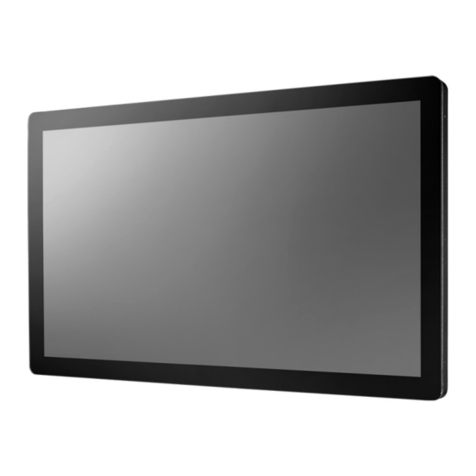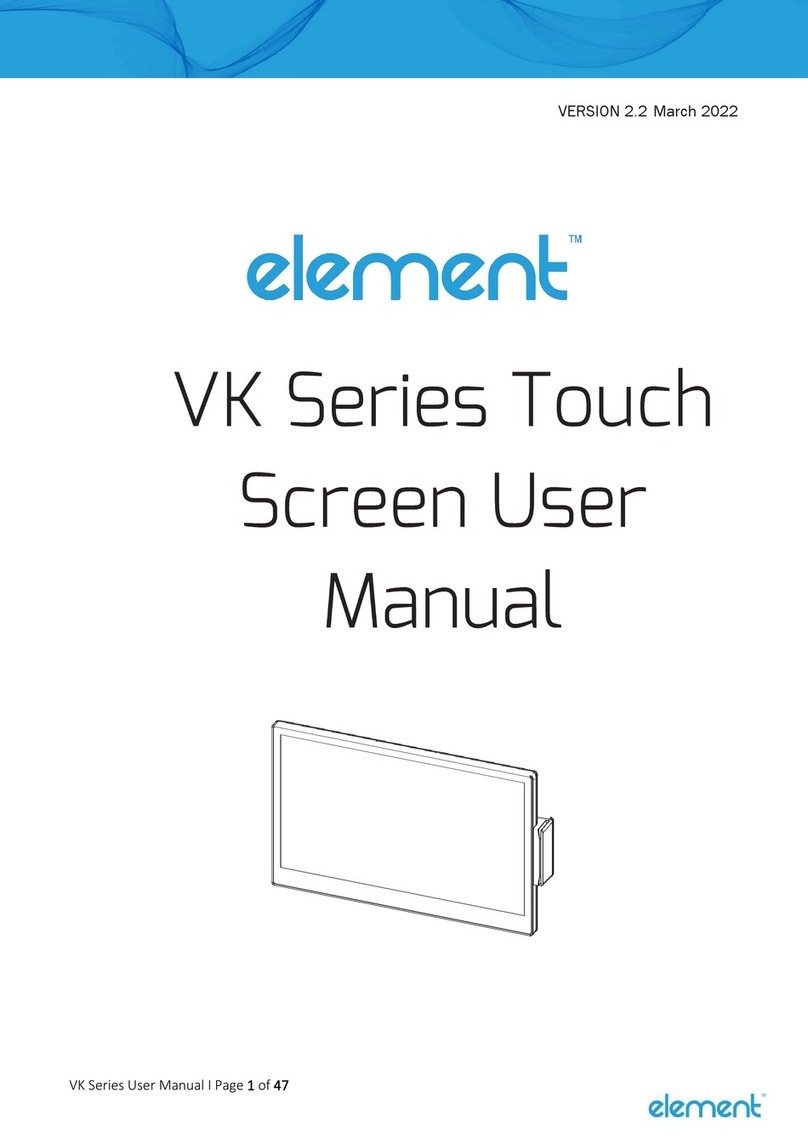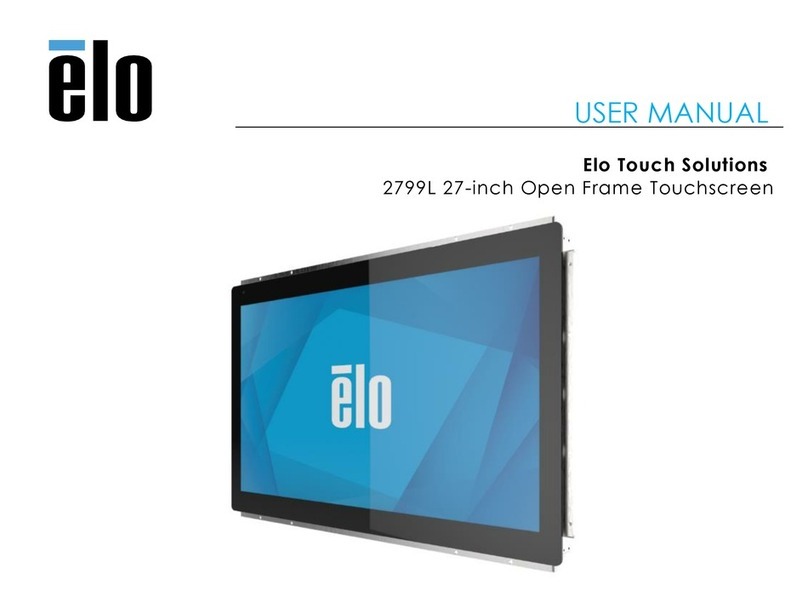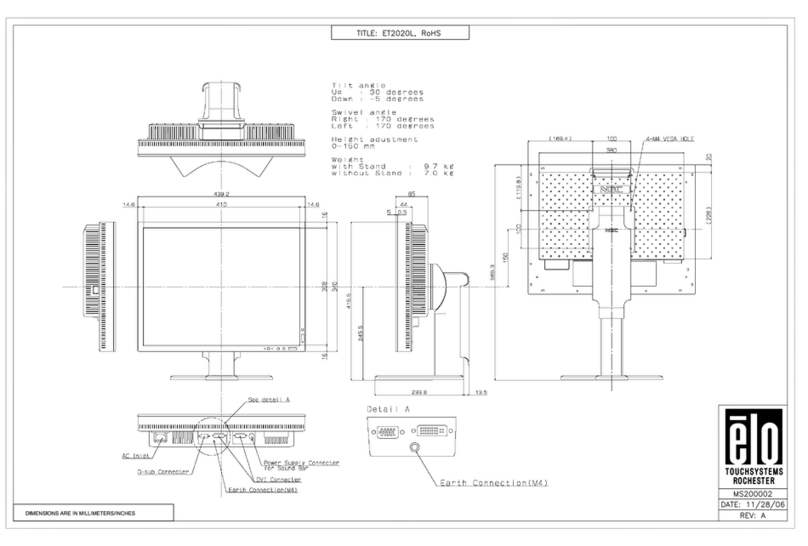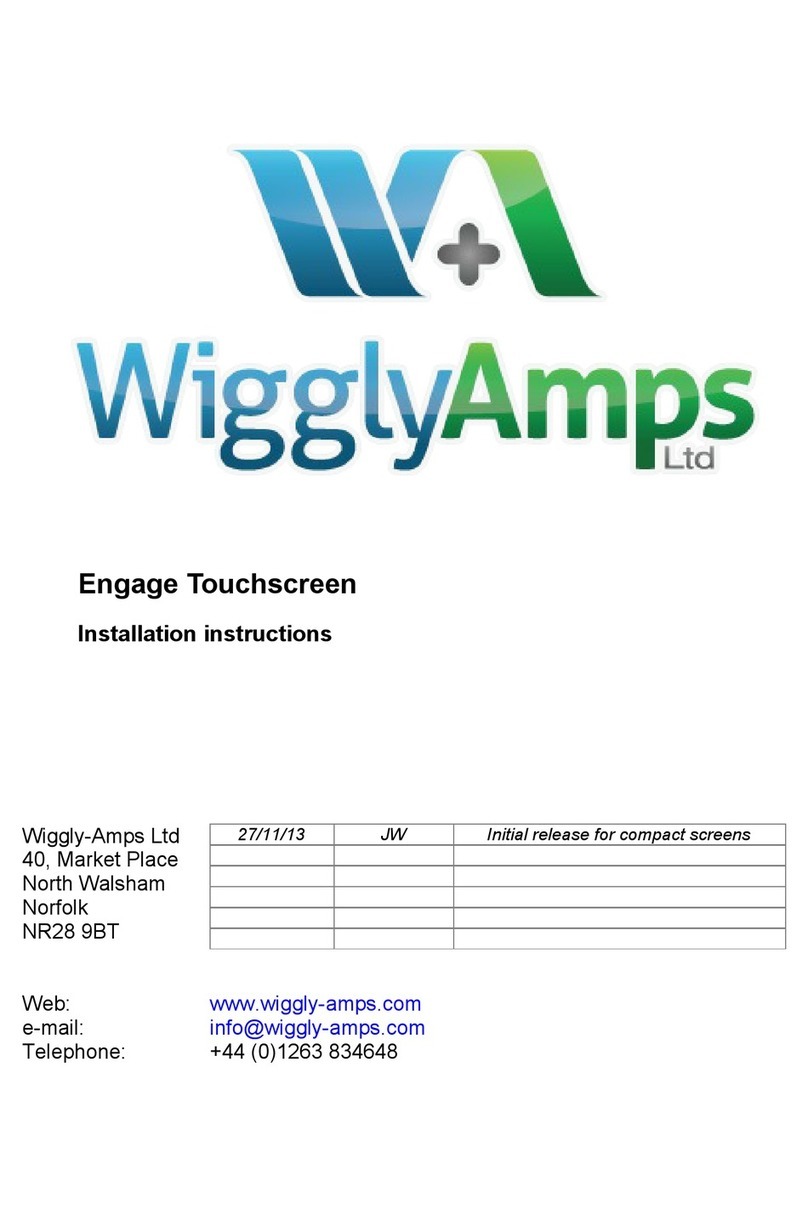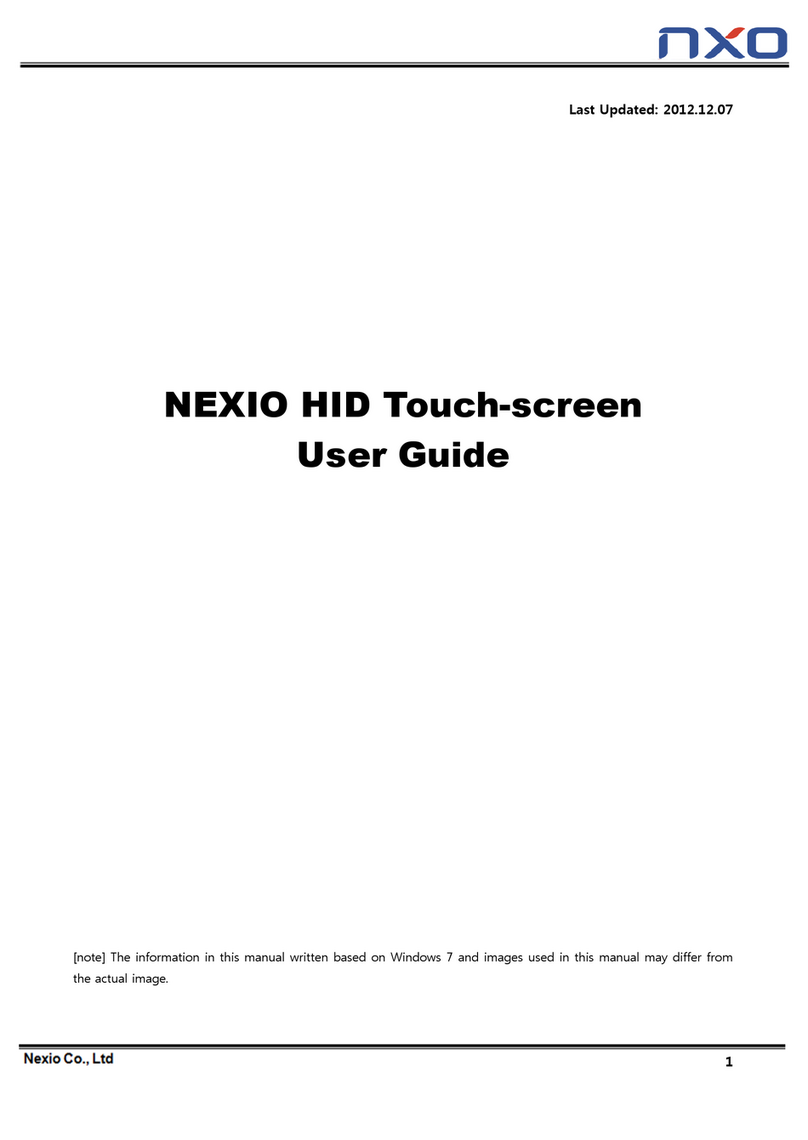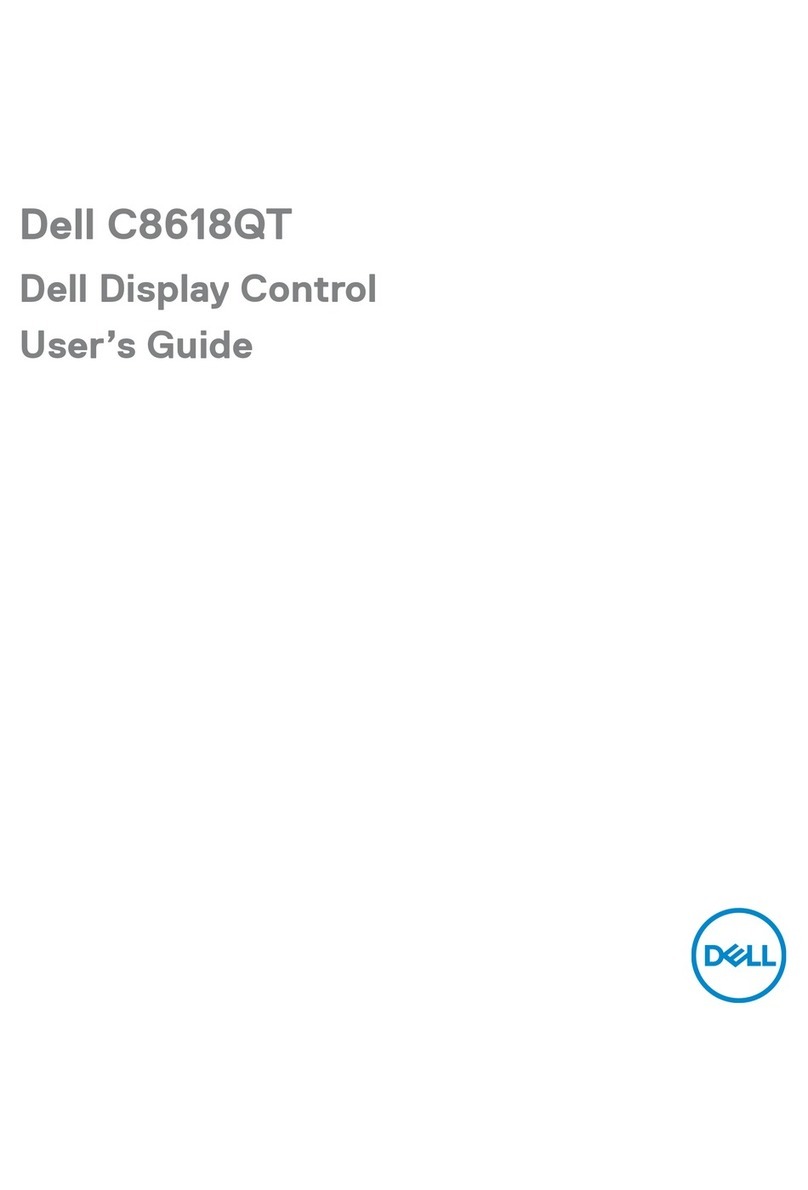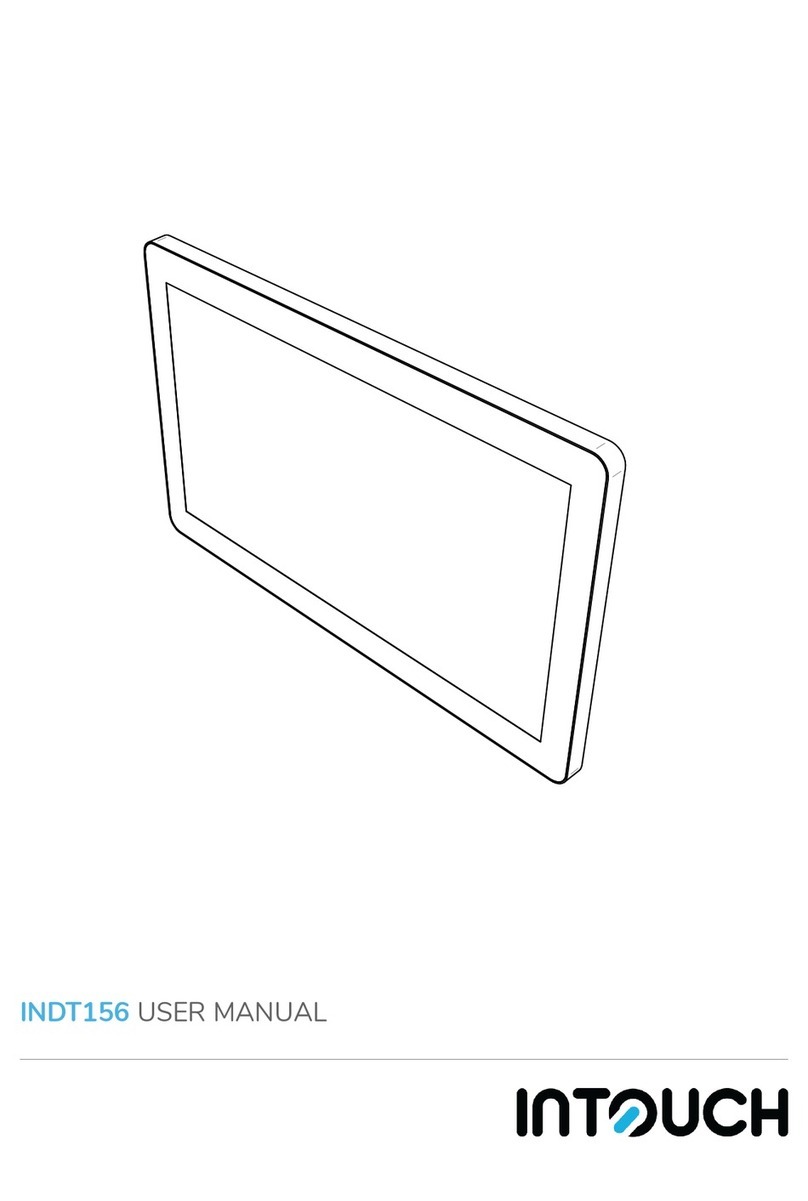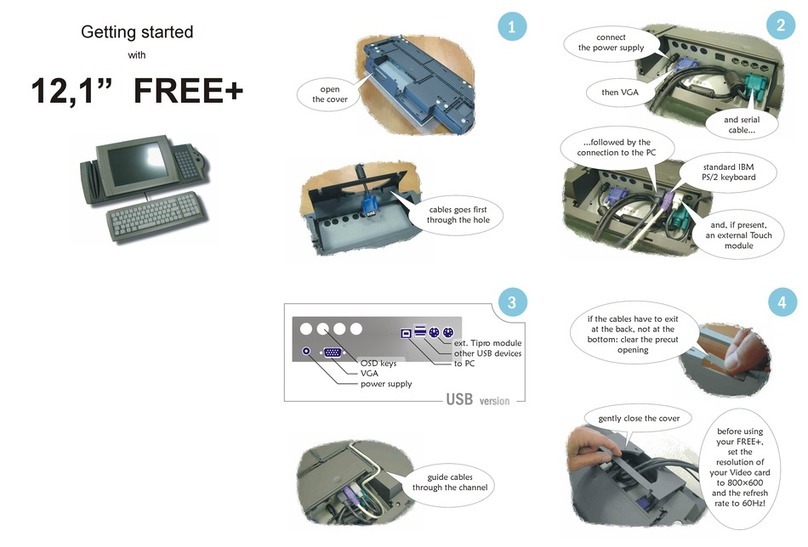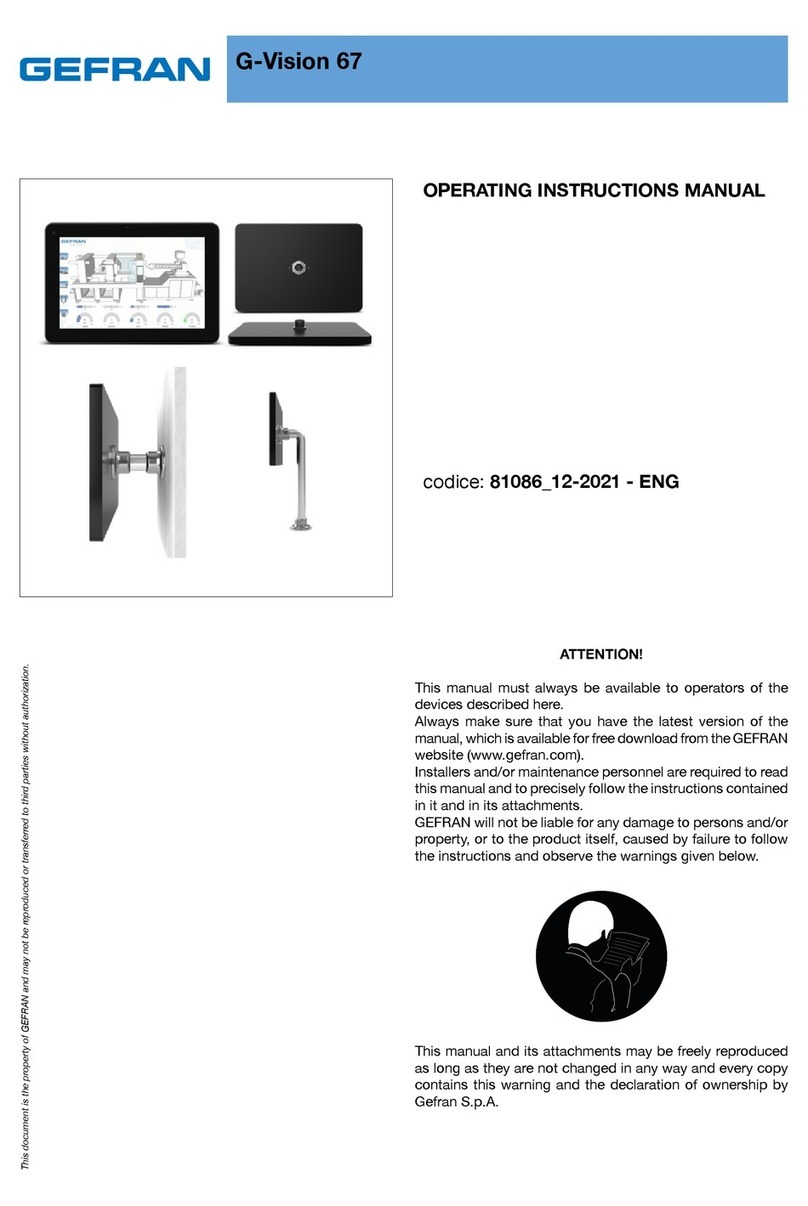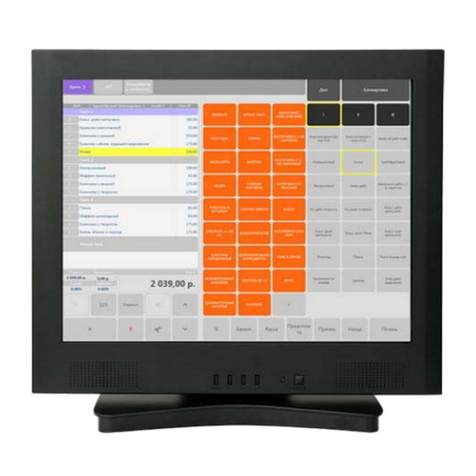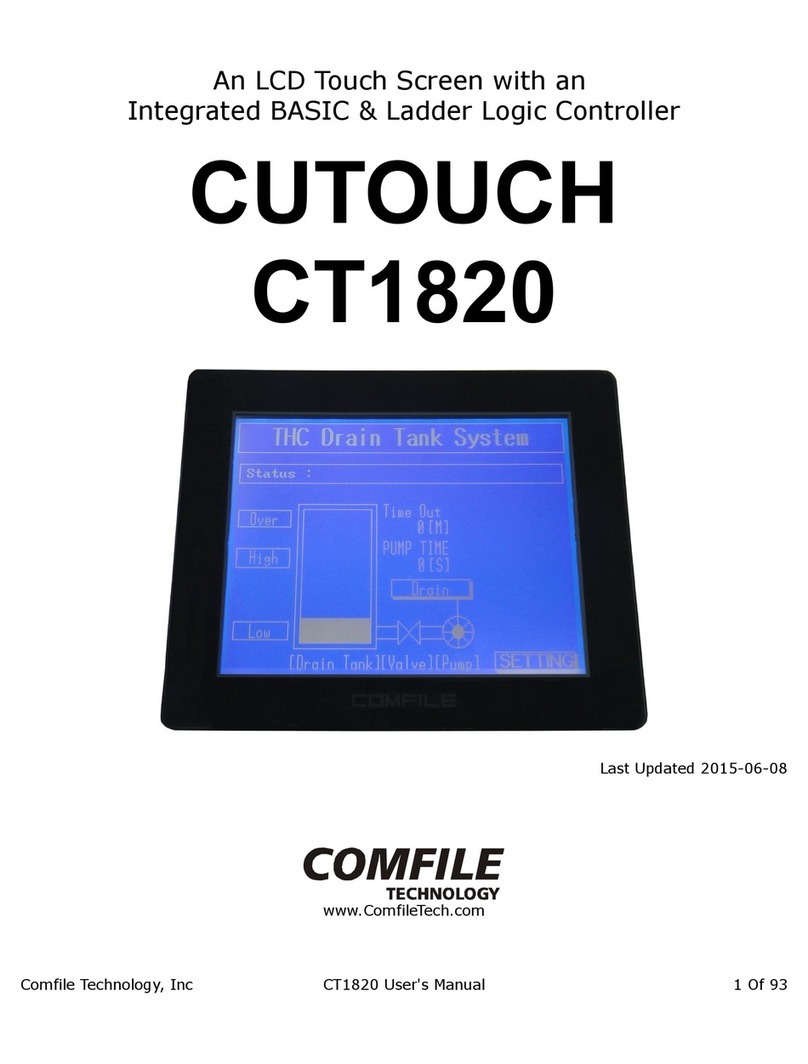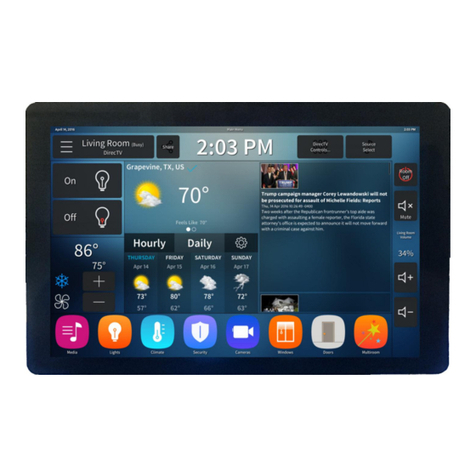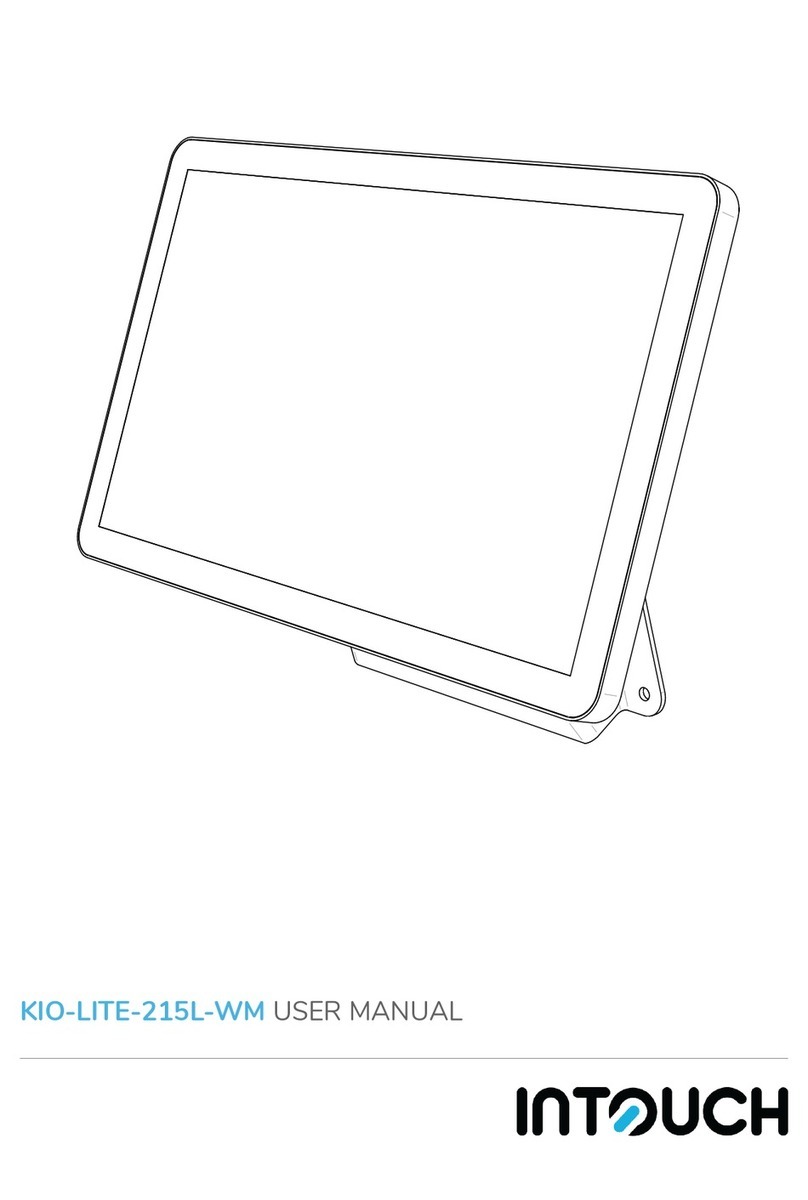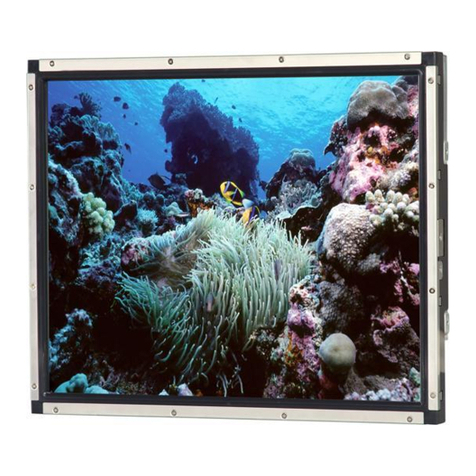The brightness and active time can be
adjusted by pressing and holding down
the volume up, volume down and mute
buttons together.
The brightness active adjustment is a
value from 0 to 99 and will adjust in real
time so the desired setting can be made
easily. This screen brightness will be
applied for a set period of time adjustable
from 0 to 60 seconds. Once you have
made the adjustment, press ‘Apply’ to
make the settings permanent.
The touch screen’s accuracy can also be
adjusted by pressing the ‘CalibrateTouch
screen’ button.You should use this if the
screen is not responsive in the correct
area.
3.2 Wireless Junction Box
The Wireless Junction Box is used for each
zone where Wireless Commander control
is required. It is contained within a plastic
enclosure which can be DIN rail mounted,
fixed to a wall, or left freestanding.
The four RJ45 connections should be
used with RJ45 plugs wired toTIA-568B
standard network wiring.
PIN Colour
1White/Orange
2Orange/White
3White/Green
4Blue/White
5White/Blue
6Green/White
7White/Brown
8Brown/White
The radio antenna is located on the
opposite face to the RJ45 connections, so
the unit is best positioned with the radio
face pointing towards the zone.
The system uses 8 different frequencies
to communicate with the Commander
and will monitor background noise
automatically and switch frequency if
needed.This is an automatic process
and does not need any adjustment or
configuration by the installer or end user.
A Commander can operate any activated
zone in the system through the currently
connected Junction Box.This allows
the user to switch zones, operate lights,
volume etc. without having to move from
their current position.
The Wireless Junction Box has two status
LED’s showing wireless and wired (hub)
data activity. Normally the hub light will
flash every second or so, the wireless
light should only flash when using a
Commander connected to box. If they are
not flashing at all or on continuously then
you may have a bad connection or severe
background RF noise.
The wireless junction box will store all
IR data for the zone when controlled
by a Wireless Commander. IR is then
transmitted to the S6 unit or AM8 hub
via the speaker or ZAM unit.This makes
it possible for the Wireless Commander
to operate IR devices, even local devices
without directly transmitting IR from the
front. Please ensure you upload the .qrc
file to each junction box as covered in
section 4.6.
3.3 Charging Station
The charging station is supplied with each
Wireless Commander unit and comes with
a 9V 2A DC power supply which should be
connected to the rear socket.The station
contains a moulded recess which matches
the outline of the Commander, making it
easy to locate the Commander to charge
the battery.There are four steel contacts
on the charger which connect to the four
copper strips on the underside of the
Commander.
